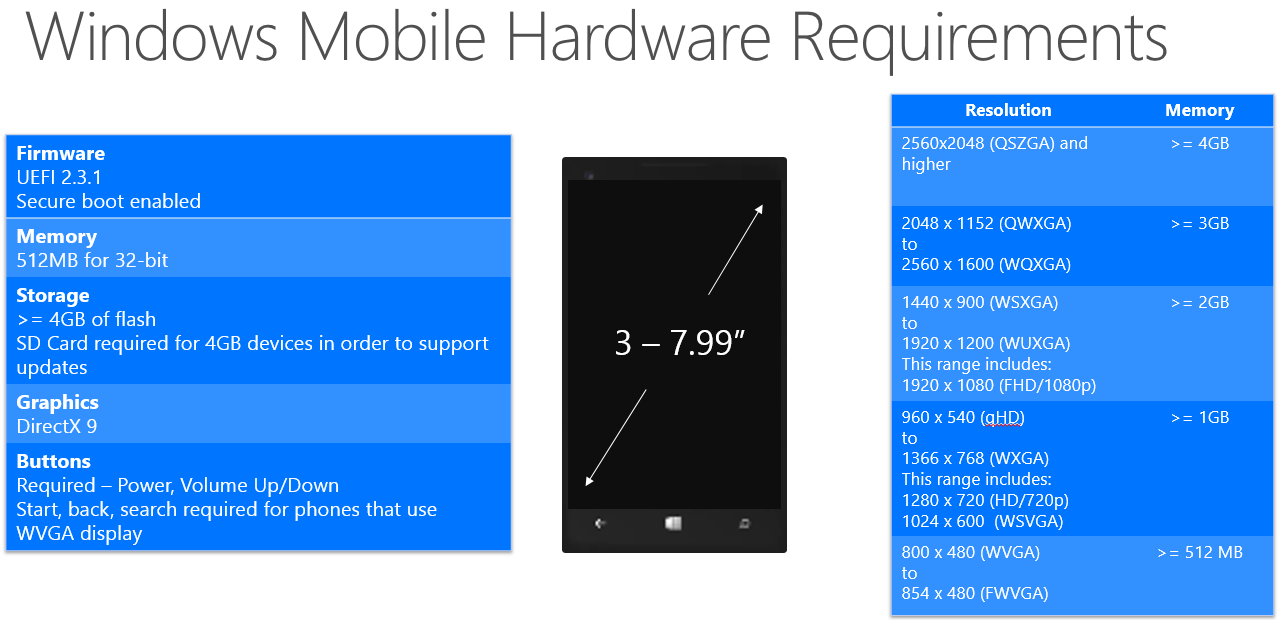We’ve seen and heard enough about Windows 10 already to know that it’s going to be a rather sizable upgrade, and today, Microsoft has got down to the nitty-gritty of revealing the requisite hardware standards needed to run the forthcoming software. Below, you can find out whether your device or machine is ready to run Windows 10 when it arrives this summer, with the software giant having just outlined the minimum specs info at the WinHEC conference in Shenzhen, China.
Since Windows 10 will span mobile devices as well as desktops, Microsoft has taken the opportunity at WinHEC to reveal everything there is to know about getting the software booted and updating across the board, and if you’re looking to utilize Windows 10 for Phones, here’s what you need to know.

The minimum amount of RAM your device will need is 512MB, which should cover most higher-end handsets and tablets released in the past couple of years. Indeed, it’s the same requirement that Microsoft has in place for the current Windows Phone 8.1, meaning that if your device runs the latest (and technically, last) version of WP, you’re probably good to go.

Your phone will also need 4GB of internal memory for Windows 10 for Phones, although if your device supports microSD, you can utilize it for purpose of updates.
In terms of display size, Windows 10 for Phones will cover 3-inch displays up to 7.99 inches, and while there aren’t any phablets hitting those levels on WP at the moment, it does appear that Microsoft has plans in this regard. Indeed, the fact that Windows 10 also supports QSXGA, WXQGA, QWXGA resolutions suggests that the Xbox maker has set its sights on larger, higher-res panels to compete with the rest of the market.
Windows 10 will be compatible with a number of mobile chips, including Qualcomm’s octa-core Snapdragon 810, hexa-core Snapdragon 808, Snapdragon 615, 210 & 208. Given that the Snapdragon 208 is a 3G-only SoC, Microsoft fully intends to cater to both top-end and entry-level handsets with Windows 10 for Phones, and although Windows Phone 8.1 runs fairly smoothly even on minimal specs, supporting the likes of the Snapdragon 810 will definitely appeal to the power user market.
At desktop level, users looking to install the 32-bit version of Windows 10 will require 16GB of free storage and 1GB of RAM, while the 64-bit variant will command 20GB and 2 gigs of RAM.

Windows 7 SP1 and Windows 8.1 S14 users will be able to jump directly to Windows 10 by means of Windows Update, as will those on Windows Phone 8.1. Those running other builds, like Windows 7 RTM or Windows 8 RTM will need to upgrade by downloading an ISO image and installing manually.

You can follow us on Twitter, add us to your circle on Google+ or like our Facebook page to keep yourself updated on all the latest from Microsoft, Google, Apple and the Web.

